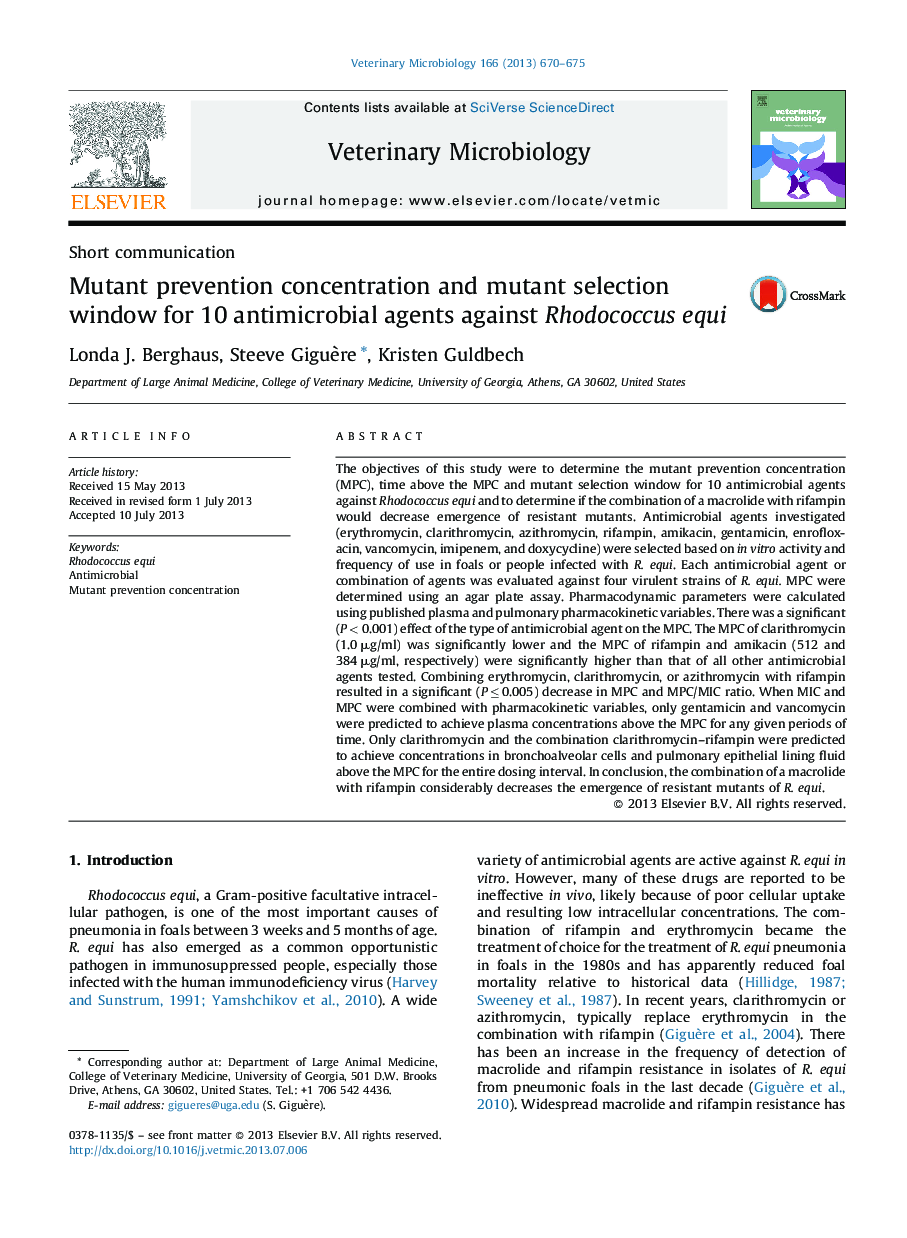| Article ID | Journal | Published Year | Pages | File Type |
|---|---|---|---|---|
| 5801217 | Veterinary Microbiology | 2013 | 6 Pages |
The objectives of this study were to determine the mutant prevention concentration (MPC), time above the MPC and mutant selection window for 10 antimicrobial agents against Rhodococcus equi and to determine if the combination of a macrolide with rifampin would decrease emergence of resistant mutants. Antimicrobial agents investigated (erythromycin, clarithromycin, azithromycin, rifampin, amikacin, gentamicin, enrofloxacin, vancomycin, imipenem, and doxycycline) were selected based on in vitro activity and frequency of use in foals or people infected with R. equi. Each antimicrobial agent or combination of agents was evaluated against four virulent strains of R. equi. MPC were determined using an agar plate assay. Pharmacodynamic parameters were calculated using published plasma and pulmonary pharmacokinetic variables. There was a significant (P < 0.001) effect of the type of antimicrobial agent on the MPC. The MPC of clarithromycin (1.0 μg/ml) was significantly lower and the MPC of rifampin and amikacin (512 and 384 μg/ml, respectively) were significantly higher than that of all other antimicrobial agents tested. Combining erythromycin, clarithromycin, or azithromycin with rifampin resulted in a significant (P â¤Â 0.005) decrease in MPC and MPC/MIC ratio. When MIC and MPC were combined with pharmacokinetic variables, only gentamicin and vancomycin were predicted to achieve plasma concentrations above the MPC for any given periods of time. Only clarithromycin and the combination clarithromycin-rifampin were predicted to achieve concentrations in bronchoalveolar cells and pulmonary epithelial lining fluid above the MPC for the entire dosing interval. In conclusion, the combination of a macrolide with rifampin considerably decreases the emergence of resistant mutants of R. equi.
